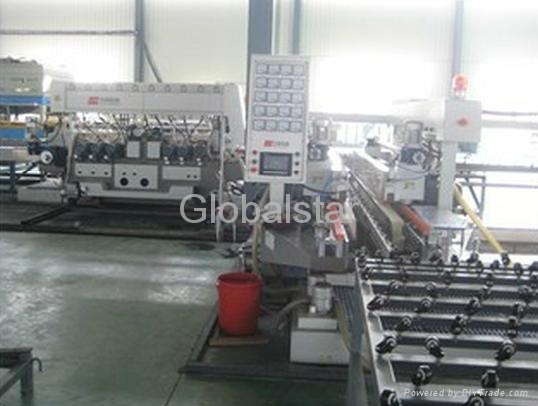General Introduction
The glass cutting process involves making a score in the glass surface with a diamond or special tungsten carbide cutting wheel and then running or snapping the cut to break the glass at the score line. The score line can be straight or shaped to follow a template or by using a Computer Aided Design (CAD) process.
Glass cutting can be done manually or with semi or fully automated Computer Numerically Controlled (CNC) machines. The accuracy can vary significantly between the processes and if accurate sizes are required for specific orders, these need to be noted on the orders or glass drawings.
Normal tolerances on cutting are listed in Table 1 as below:
Lisec cutting machines can cut to +/- 0.25mm in size, +/- 1.0mm in squareness and +/- 0.5mm in straightness, but additional processes, such as edge working, can alter the overall finished tolerance.
Some restrictions apply to cutting glass as it is very difficult to cut a strip of glass less than the glass thickness. For thick glass such as 8mm and above, used in glass fins and the like, the minimum width of the strips is normally restricted to 10 times the thickness.
Other methods can be used to cut glass such as a water jet or diamond saw, these methods are used in special applications.
Diamond Wheel Cutting
Diamond Wheel Cutting with Fully Automated Centralized Glass Storage and Loading System.
High precision glass cutting table:
Cutting tolerance: +/- 0,2 mm
Thickness: 2-24 mm
Max processing glass size: 6200 x 3300 mm
Capacity: 3000 m2/8 hour
Combined automatic high precision edge deletation for off-line coated Low-E coating to achieve the highest capacities.
Water-soluble cutting oil preventing the pollution of glass.
Laminated Glass Cutting
With Lisec laminated glass cutting lines, the laminated glass cutting operation is safe, easy and precise manufacturing operation.
Waterjet Cut
Vertical machine with entirely new prospects for cutting, cut-out of holes of any shape and treatment of the cutting edges of glass sheetsresp. any other sheet material.
The characteristic feature of its jet technique, which makes it different from known machines, is the freely located surrounding of the jet point on the workpiece in any position and dimension. This new system avoids expensive sacrificial material. In addition the workpiece, especially glass sheets, will not be damaged on its surface by any jet reflection as known from established machines. Integrated additional edge working tools enable a unrivalled range of utilization of this multifunction processing center. Milling-, grinding- and countersinking bits are working.
Special Advangages:
High accuracy (+/- 0,1 mm) of cutting resp. edge working by direct-drive positioning of working head.
Cutting/eging even possible in clamping/transport area of glass edge.
Comprehensive production even of complex shapes without any additional handling or finishing.
Avoids micro-cracks compared to usual glass cutting.
Low no. of tools required, cut-outs not restricted to min. diameters.

